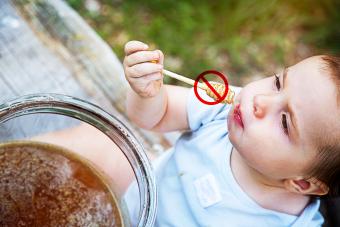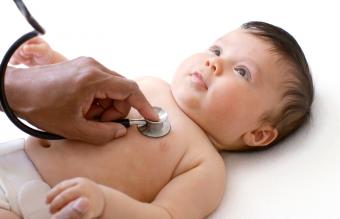
Cradle cap is a condition that appears in babies, usually within the first few months of life, and its appearance is very common. While most cases go away on their own and the baby is not at all bothered by it, sometimes parents wish to get rid of it for cosmetic reasons. If the condition becomes severe, parents and doctors may also want to treat it. Solutions range from home remedies like applying oil and shampooing, to more medical options, such as using cortisone creams and adult dandruff shampoos.
Treating Cradle Cap
It's important to remember that not all cradle cap cases require treatment, and that in trying to fix the problem you might actually end up making it worse. Doctors believe that cradle cap produces no discomfort for the babies who have it, which is one of the main reasons to avoid treating it. In addition, the vast majority of cases heal themselves in time (often between 6 to 12 months). Yet another reason to refrain from treating it is that the causes are usually unknown. One possibility is that it is a fungal infection; another possible cause is hormonal changes, similar to infant acne. While fungal infections can be treated, hormonal fluctuations are a simple fact of life during the first few weeks and months of a baby's life. Treating with an antifungal treatment will have little effect if it is caused by hormones.
The first thing you should consider before starting treatment is how bad the case is and whether it is bothering anyone. Consult with your doctor. If she thinks it is a mild case that will go away in time, you may want to refrain from trying to treat it. If your baby's condition is severe, or if you are having trouble with it for cosmetic reasons, talk with your doctor about trying home remedies before going to a stronger option.
Simple Remedies for Cradle Cap
Two possible solutions for this common condition are to simply shampoo your baby's hair more frequently or put oil in his hair.
Frequent Shampooing
Since the problem can be caused by hormones spurring overproduction of oil on the scalp, shampooing your baby's hair more often, and thus drying out this oil production, can provide some relief. Be aware though that more frequent shampooing can cause the scalp to increase oil production. For this reason, this treatment can either solve the problem, worsen it, or have no effect whatsoever.
Oil Application
Applying a natural oil like olive oil to your baby's scalp, letting it sit, and then shampooing it out, can decrease the amount of flakes seen on the scalp. Like washing your child's hair more frequently, this remedy can also have the inverse effect; you may be able to decrease the appearance of cradle cap by applying oil, but you might also cause the condition to become worse at the same time.
Doctors' Treatments for Cradle Cap
If your baby has a serious case or is not responding to simple remedies, your doctor might recommend a stronger treatment.
Antifungal Creams and Soaps
A doctor might prescribe creams used to treat jock itch or vaginal yeast infection if your baby's condition is severe. These creams may help if the cause of the problem is related to fungus. Another option is antifungal soap, which can have the same effect, but is more difficult to use with babies than a cream.
Anti-Dandruff Shampoos
While this solution is more common in toddlers than babies, anti-dandruff shampoos may be an option. Get your doctor's approval before trying this on your own.
Smooth Scalps
Whether you decide to let your baby's case of cradle cap work itself out over time, or you use any of the above remedies, rest assured that the vast majority of cases clear themselves up in time. While the condition is very common, it is very rare that it extends on into the toddler years or into adulthood. Since your baby is unaffected by his scaly scalp, try not to let it bother you either. If the condition doesn't respond to these common ways to get rid of cradle cap, try to wait it out and understand that it is much more common for it to clear up than for it to stick around.







